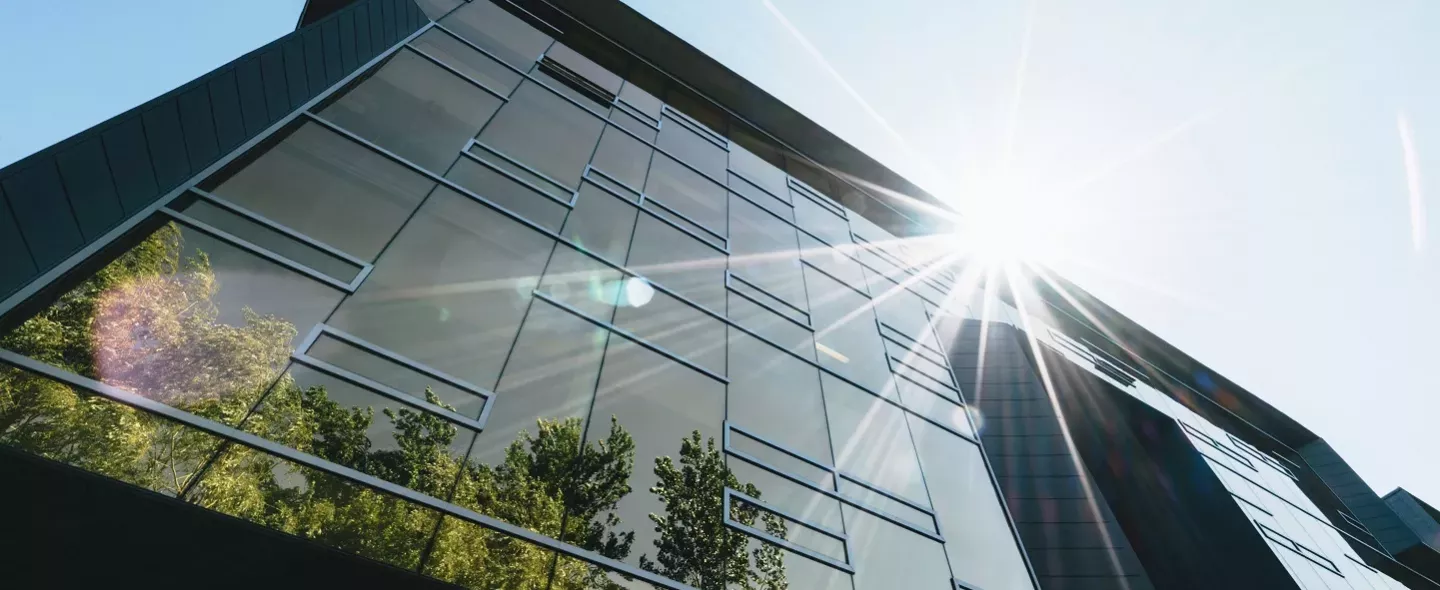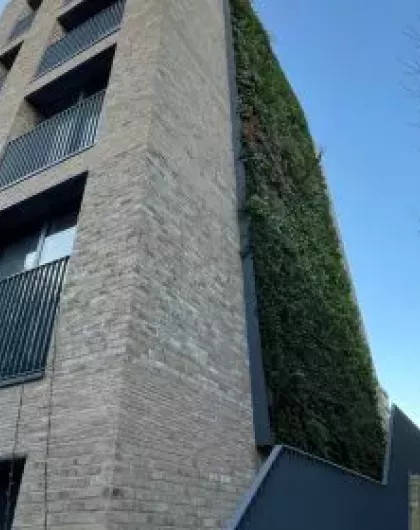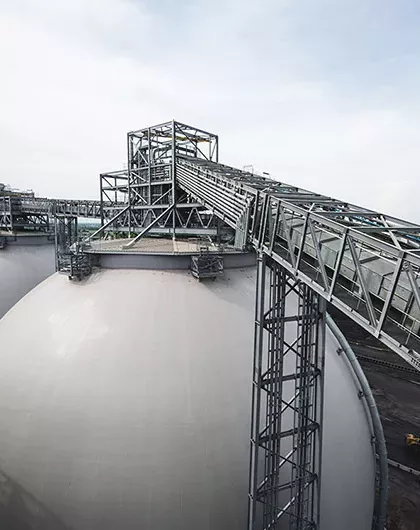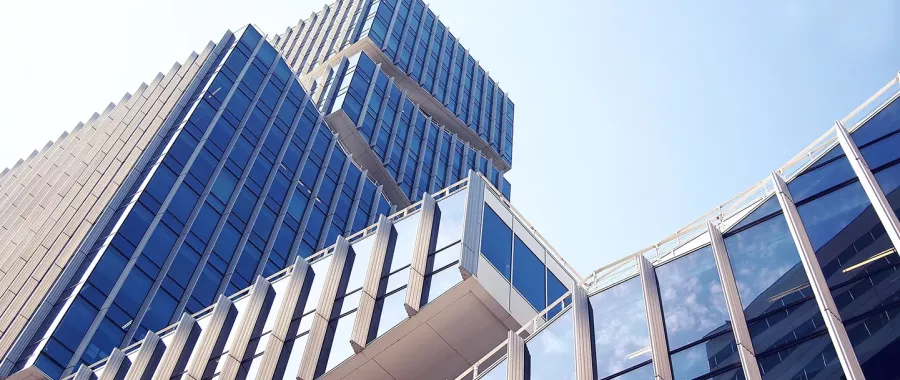BREEAM (Building Research Establishment Environmental Assessment Method) is a sustainability rating system used to assess the environmental performance of buildings.
It is used to assess measure and certify the performance of buildings in terms of their environmental impact. The system takes into account a variety of factors, from energy efficiency and water use to materials used in construction and the impact of the building on the local environment.
The BREEAM system is divided into three categories:
- BREEAM Design: The BREEAM design stage involves the design team working together to identify, select and implement BREEAM credits that will be used to assess the building’s environmental performance. During this stage, the team will assess the building against the various BREEAM criteria, such as energy efficiency, water efficiency, pollution control, waste management, and occupant health & wellbeing. They will then develop a strategy to meet these criteria, incorporating the most appropriate and cost-effective solutions. This could include the use of renewable energy sources, passive design strategies, and the selection of materials with low environmental impact.
- BREEAM Management: This assesses how the building is managed, including waste management, building operations and maintenance. The BREEAM Management stage is the second stage of the BREEAM assessment process. During this stage, the design team will review the design, construction, and operational plans to assess their compliance with BREEAM standards. The BREEAM assessor will then review the plans and provide feedback on how to improve the design and performance of the building. Once the design team has made the necessary alterations to improve the building’s performance, the assessor will issue a BREEAM certificate.
- BREEAM Performance: The BREEAM Performance stage is the final stage of the BREEAM certification process, and is the stage where a BREEAM rating is assigned to the building. During this stage, the BREEAM assessor will assess the performance of the building against the BREEAM criteria and assign a score for each criteria, including its environmental impact, occupant satisfaction and health and wellbeing. The overall score is then used to determine the BREEAM rating of the building.
Who needs a BREEAM certificate?
Developers, architects, contractors and other professionals use BREEAM to assess the sustainability of their projects, and to demonstrate their commitment to sustainable development. It is also used by local authorities and other public sector organisations to set standards for green building.
How does the BREEAM rating system work?
You can review a project’s BREEAM rating by reviewing its BREEAM certificate. There are five possible ratings that a project can receive, which are: Pass, Good, Very Good, Excellent and Outstanding.
It is important to review the BREEAM certificate and certification mark, as it is the only accurate method of verifying a BREEAM rating. The certified rating reflects the performance of a project as measured against the BREEAM standard.

BREEAM Standards
The BREEAM Standards serve as a comprehensive guide for improving the environmental performance of buildings. They encompass several individual standards specifically designed for different stages and types of construction, such as New Constructions, In-Use Buildings, and Refurbishments.
New Constructions: These standards provide a framework for delivering high-performing, sustainable assets. They support commercial success while creating positive environmental and social impact, while being adaptable to the asset’s location for international applicability.
In-Use Buildings: The BREEAM In-Use standards offer a means for property investors, owners, managers, and occupants to drive sustainable enhancements in operational performance. This leads to benchmarking, assurance, and validation of operational asset data.
Refurbishments: The BREEAM standards for refurbishments aim to improve the performance of existing buildings, reducing running costs and enhancing environmental performance.

Talk to our experts

BREEAM assessment stages include:

1.) Pre-Assessment
The Pre-Assessment Stage involves developing a project strategy, establishing the sustainability performance level of the project and setting the criteria that needs to be included in the project’s design. An action list outlining the evidence required from each member of the design team is then provided to make all parties understand their responsibility in ensuring the necessary BREEAM rating.
It is important to complete the pre-assessment stage as early as possible, as feedback can influence elements of the design.

2.) Design Stage Assessment
The Design Stage Assessment includes an analysis of the project design and the associated systems.
SOCOTEC’s BREEAM assessors will review drawings, specifications and calculations against the project criteria set out in the BREEAM Scheme Manual.

3.) Post Construction Stage Assessment
The Post Construction Stage Assessment includes a review of the construction, commissioning and handover. This assessment is conducted based on the evidence collected by the BREEAM assessor during a site inspection and will review whether the commitments outlined during the design stage have been fulfilled.
After the post construction assessment has been completed, a certificate of the final BREEAM rating will be issued.

4.) Operation and Maintenance Assessment
The Operation and Maintenance Assessment involves an evaluation of the operational and maintenance performance of the building and its systems.

Our Sustainability Services
Supporting your organisation with achieving a sustainable future

SOCOTEC is a leading provider of sustainability services for architects and designers. Our services help you plan, design, and build projects that are both cost-efficient and environmentally friendly.
We provide a range of services, from environmental impact assessments and sustainability reports including BREEAM assessments and consultancy throughout the RIBA plan of works, various testing and monitoring such as air and acoustic testing, thermographic surveys, noise monitoring, vibration monitoring and dust monitoring.
Our team of experts have a wealth of experience in applying sustainable design principles to ensure that your projects meet the highest standards of environmental performance. SOCOTEC UK’s sustainable approach can support you with ensuring your project is both energy efficient and cost effective.
SOCOTEC is a leading provider of sustainability services for architects and designers. Our services help you plan, design, and build projects that are both cost-efficient and environmentally friendly.
We provide a range of services, from environmental impact assessments and sustainability reports including BREEAM assessments and consultancy throughout the RIBA plan of works, various testing and monitoring such as air and acoustic testing, thermographic surveys, noise monitoring, vibration monitoring and dust monitoring.
Our team of experts have a wealth of experience in applying sustainable design principles to ensure that your projects meet the highest standards of environmental performance. SOCOTEC UK’s sustainable approach can support you with ensuring your project is both energy efficient and cost effective.
Want to find out more about our services?







